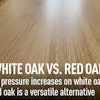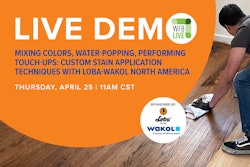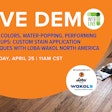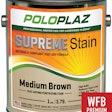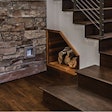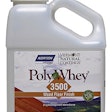This blog series comes courtesy of Joe Buckhaults, COO of Robinson Lumber Company. Joe and I have worked together on many a Lacey-related project, and he brought a new resource to my attention that might help companies evaluate risk levels for certain purchases. However, as he outlined to me, it might lead to more confusion rather than less.
When a company does a Lacey risk assessment, one of the factors regularly considered is the source country. That’s often a challenge to evaluate, and one of the most common recommendations by some organizations is to consider the “level of corruption” within the country and use that to equate “risk of illegal wood.”
But “level of corruption” is very difficult to measure and compare between countries.
But “level of corruption” is very difficult to measure and compare between countries. Merely recording the number of convictions of corruption-based activity really measures only the likely effectiveness of efforts to uncover and prosecute corruption. Because of this, many of those who have studied this question believe that measuring the perception of corruption is the best way to compare corruption levels across different countries. Enforcement is certainly something to consider and is important, but certainly so is the idea that corruption is commonplace and tolerated, right?
Brazil is a major supply source for Robinson. The company has two procurement offices in Brazil that monitor their supply chains. Many in the wood industry will identify Brazil as a “high risk” source—that there is a high risk that illegally logged material will enter the supply chain—and one of the ways they explain that rating is by pointing to the Corruption Perceptions Index (CPI).
Joe told me that he was updating his risk assessments and noted that Brazil fell several spots (indicating increasing corruption) in the CPI 2015 ranking due to the Petrobras scandal. In the 2015 CPI, Brazil now ranks 76 while the United States is 16. (The least corrupt country, according to the CPI, is Denmark, and the most corrupt, at number 167, is North Korea.)
The CPI is published by Transparency International (TI). TI also does a different report called the Global Corruption Barometer (GCB). Why two? The two reports are developed through different methods and look at different sectors.
CPI ratings are computed from the corruption rankings from 11 other organizations (12 reports total) and applies to “public sector” corruption only. Those reports each have their means of determining rankings, and the CPI just consolidates and averages them. (Users should be aware that the 2015 CPI is compiled from 12 reports, some of which were produced in 2012, so there can be a significant lag in some of the data.)
The GCB, on the other hand, is a directed survey (using one set of questions for all countries) in which 114,000 respondents replied with their perceptions of corruption in 12 sectors in their countries. Joe wrote to me that “it is probably riddled with survey bias, but I doubt it is any worse than the methodology used for the CPI.” (As a note, the GCB was last updated in 2013, but will be published again sometime this year.)
Joe pointed out that the results of the GCB are quite different from the CPI. And also that the United States and Brazil have similar results. Hmmm … next week, we’re going to have to get into those numbers in detail.













